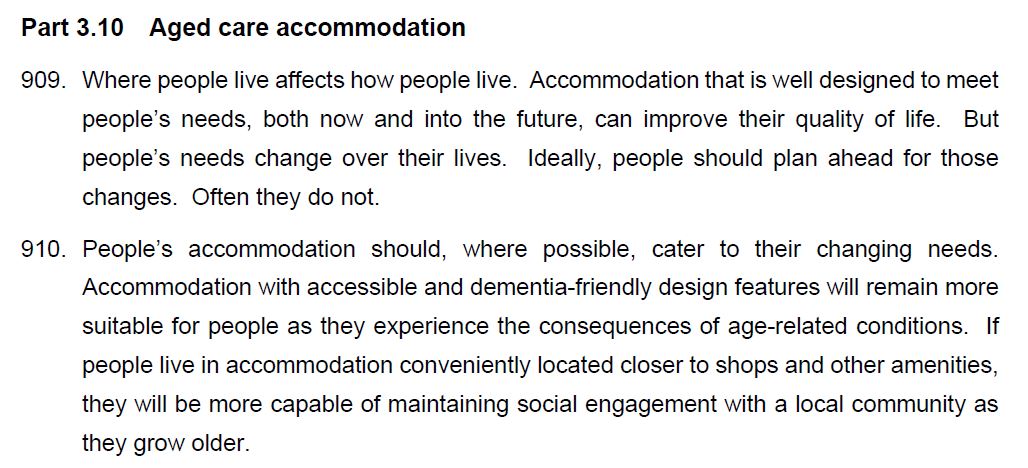It would appear that few village sector operators are keeping a close view on the Royal Commission into Aged Care – which is a big mistake.
Despite there being very few submissions from the sector amongst the 10,000-plus received, the opportunities presented amongst the 124 recommendations made by the Counsel Assisting to the Commissioners in the two closing days last Thursday and Friday are eye-watering.
Running to over 450 pages with support documentation, plus commentary from the Commissioners, individual recommendations and their basis have to be knitted together to conceptualise the opportunities.
I will draw a few of them here and add to the discussion over the next few issues.
I will be utilising the 80-page summary our Editor Lauren Broomham prepared for our subscription readers of The Daily COMMISSION.
First up, consider what retirement villages are and what they deliver to ageing residents.
Villages are resident funded, fit for purpose accommodation that deliver a home and management that supports residents as they age, including security and social connections.
The Royal Commission is tasked with investigating how to achieve higher quality and safer aged care, with aged care commencing with care support in the home.
 With home care, village residents live in the ideal environment to maximise their quality of life and minimise the time likely to be in residential aged care.
With home care, village residents live in the ideal environment to maximise their quality of life and minimise the time likely to be in residential aged care.
However, the number of retirement villages being built is less than half the number required to maintain penetration because of land zoning restrictions and lack of a clear industry business model that is bankable.
Enter the Royal Commission.
From the recommendations made last week, we hypothesise that a variation of the village model can be put to the Federal Government that will deliver on many of its objectives and absorb a large number of the future aged care clients, while delivering a higher quality of life for a significant number of self-funding older Australians.
Recommendations 1 & 2 state the existing Aged Care Act be thrown out and replaced with a person (customer) centred focus and that the Federal Government work with the State Governments with a National Cabinet (similar to COVID) to make the health and aged care systems work for one outcome – a better support for older Australians.
These actions can focus Federal action and funding for a redesigned model of retirement villages plus have State and Federal governments focus on national legislation and regulations that can also encompass zoning and housing models.
Recommendation 1 – A new Aged Care Act to replace the current one no later than 1 July 2023.
Senior Counsel Assisting Peter Gray QC (pictured above) said the legislation could include key principles from the UN’s Human Rights declaration for older people including independence, participation, care, self-fulfilment and dignity.
Recommendation 2 – Integrated long-term support and care for older people.
Mr Gray said there is also a need for a new National Cabinet Reform Committee on Ageing and Older Australians. This would be established between the Federal and State and Territory Governments and to coordinate the care, health and wellbeing of older people.
“We also submit that there is considerable scope for cross-generational engagement in programs linking older people to their communities,” he said.
This Committee would report regularly on its progress and its strategy – to be established by 31 December 2022 – would cover a 10-year period before being comprehensively reviewed to develop the next strategy.
Recommendation 9 – Meeting preferences to age in place by immediately increasing the number of Home Care Packages to clear the waiting list, keeping it clear and reporting each quarter on the status of the waiting list.
 Recommendations were also made to make all Home Care available on a needs basis, meaning if a person is assessed to need home care, they get it within three months.
Recommendations were also made to make all Home Care available on a needs basis, meaning if a person is assessed to need home care, they get it within three months.
This will allow village operators to specify with confidence that a resident in a village will have government funded care support, while the village will provide security, community and social support.
‘Big box’ residential care on the way out – and small home models to benefit from extra funding and incentives in Counsel Assisting plan.
Now the big news.
The Counsels Assisting and the Commissioners believe that support and care is best delivered in ‘small homes’, not big box residential aged care homes.
And they are recommending the Government look hard at accommodation design.
Our hypothesis is that this can include retirement villages in that a concept of new village design can be endorsed and promoted by Government/s.
This can cross Federal/State boundaries, give certainty to operators and to potential customers.
According to Senior Counsel Assisting Peter Rozen QC, residential care operators would be expected to move to smaller-scale housing models integrated within the local community within four years under an aged care accommodation strategy.
He argued the Royal Commission had shown smaller scale accommodation provided greater quality of life and better quality residential aged care than larger-scale models.
To encourage their development, Mr Rozen made two recommendations:
Recommendation 57 – Improving the design of aged care accommodation under a three-step process: developing and publishing a comprehensive set of national aged care design principles and guidelines on accessible and dementia-friendly design for residential care by 1 July 2022; implementing a program to adopt these principles and guidelines by 1 July 2023; and amending the National Construction Code so new developments are informed by these principles and guidelines by 1 July 2025.
Recommendation 58 – Capital grants for ‘small home’ models of accommodation to be provided from the Rural, Regional and Other Special Needs Building Fund from 1 January 2022.
Mr Rozen said this recommendation was aimed squarely at reversing the trend towards larger, more institutional residential care.
“That’s a product of the market in operation, essentially, of the lack of steering by the system governor that’s allowed accommodation – residential aged care accommodation to grow in size, particularly in the last ten years, and it would seem that unless there is some policy intervention, those trends will continue,” he said.
So here is the point.
The village sector can formulate an accommodation and ageing service, based on its track record and experience, that delivers much of what the Government is seeking and with the added benefit that villages are more efficient to deliver services, have a track record and reablement and wellness, and are ready to go.
To get the ear of Government will require one voice and the backing of all operators.
ACSA, LASA and the RLC are ideally placed to fulfill this role if they come together as a unified ticket. They must be talking now and be ready when the Royal Commission’s Final Report is released on 26 February 2021.
It will either be an exciting, tailor made future, or a future of declining market penetration. It is up to the members to make their opinions heard by the peaks.
Over the next few issues, we will further expand on the opportunities.










